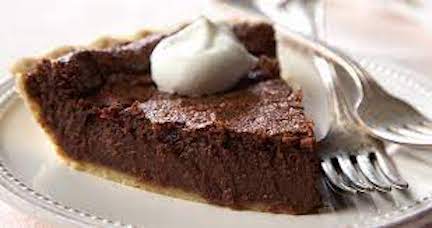Watch out for these hitchhikers & enjoy chocolate pie
Published 9:30 am Friday, October 8, 2021

Today’s Special
After I sat down on the church pew Sunday night, I glanced down at the hem of my top and noticed a couple of brown spots. “Oh foot,” I thought, I had planned to wear it again on Monday. But with a little further investigation I discovered that I had a hitchhiker, the seeds of a beggar lice plant. Back home, I found more… on the hand towel, my housecoat, the shower curtain, an upholstered chair, my jeans, DW’s socks and a very big white dog. ‘Tis the season it seems.
Not surprised though. Every morning when we let our two canine friends out of their kennel our big girl makes a beeline to the field behind us. She soon returns after completing her patrol, which includes wading in a creek, finding fresh dirt, and most recently getting covered in beggar lice.
She comes joyfully trotting back with a thick ring of greenish to brown seed pods stuck securely in her (what once was) pretty white fur around her neck like a polka dot collar. Val is definitely not a girly girl, she doesn’t mind getting dirty or wearing her seasonal adornment, but her eye liner is always perfect around her big brown eyes.
I distinctly remember in elementary school learning about how seeds are spread. Some heavier seeds just fall to the ground, like a bean or a pea; some are lighter than air and are carried by the wind, a dandelion for example.
Others are eaten by birds and other animals and are spread in their droppings. And then there are “hitchhiker” seeds like cockleburs and beggar lice which are like Velcro and can attach to anything. These seeds depend on people and animals to carry them far and wide. But I didn’t know what a beggar-lice plant looks like, I’d never thought about it. I had to look it up.
The beggar lice (which are actually seed pods and not really lice) are of the Hackelia virginiana variety, which is a biennial plant, native to our area of the south but considered an invasive nuisance.
The plant itself is rather nondescript with little white flowers in mid-to late summer. The seeds start out green, dry to a dull brown holding on to each stem of the plant as the leaves fall off, similarly to soybeans. The sticky little beggars are dispersed easily for they can catch a ride on anything that brushes by, ensuring that their life cycle continues wherever they land and can germinate.
The seed pods are very hard to dislodge, but eventually do lose their stickiness and fall off, somewhere on down the road, making our Valley girl the perfect host. Today she’ll be covered with beggar lice and tomorrow she won’t. (Except when they get all matted up in the fur under her chin, requiring scissors and a good brush, and luckily, this good doggie doesn’t mind the extra grooming.
Redeeming value. Pollinators, like bees, butterflies and hummingbirds, are attracted to the beggar lice flowers. And who’d thought! Beggar lice pods are edible. Seems you can just gather up as many as you can stand and toast them in an iron skillet for a nice crunchy fall snack, much like soybeans. So, there’s your recipe of the week. Just don’t let them stick going down!
Recipe of the Week
Granny’s Chocolate Chess Pie
No foraging necessary…
1½ cups sugar
⅓ cup cocoa
2 tablespoons all-purpose flour
6 tablespoons margarine
1 cup evaporated milk
2 eggs, slightly beaten
1 tablespoon vanilla
1 9-inch, uncooked deep-dish pie shell
½ cup chopped pecans (*optional)
Mix sugar, cocoa, and flour. Set aside. In saucepan, melt margarine, slowly add milk, eggs and vanilla. Whisking until well blended. Add the dry ingredients; beat with mixer for 3 minutes until the batter is very smooth. Pour into pie shell; sprinkle with chopped pecans if desired. Bake in 350° preheated oven for 45 minutes. Cool on wire rack before slicing. Serve with a dollop of whipped cream or readi-whip.




